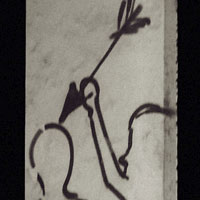Typically in the fashion style of street photography models are posed on sidewalks and in other public places. Most street photographers wouldn’t recognize this as their art. More commonly labeled street photography is the more covert, reportage style which records contemporary society. It captures single moments in time and records a diary of sorts for future generations. As with most other styles of photography, the best lens for street photography depends on what style of photography you want to capture.

Traditionally the best lens for street photography is a wide angle lens because it gives the viewer a sense of being there and helps makes a more dramatic photo. But in order to use a wide angle lens, with it’s short focal length, you have to be very close to your subject. Getting that close can ruin the moment and your subject may act differently when they see your camera.
The most common lenses for this type of photography are fixed 35 mm or 50 mm focal length. A zoom lens with a range of, say, 28 mm to 55 mm (based on a full-frame 35mm SLR camera) is also popular as it gives more framing opportunities. The lack of dramatic distortion gives a more natural look to the final picture. These lenses also give a sense of intimacy because the photographer must be closer to the subject.
If you want to take more candid photos from greater distances, the best lens is one with a longer focal length. A lens with a minimum focal length of 70 mm or 80 mm lets you stand further away so you can capture the moment without intruding.
Some street photographers are using even longer telephoto lenses so they can be so far away from the subject that they are not seen by their subjects. While some street photographers say this is not true to the art, it does allow the photographer to be further away so they don’t disrupt the subject or the moment.
When the subject becomes aware of a photographer, they will act differently. For a true picture of the moment, telephoto lenses make it less likely that your subject will change their behavior. In most circumstances the last thing you want is for your subject to see you and either smile or act angry. The separation also tends to give you more time to compose your shot before taking the picture.
Along with focal length, the aperture also plays a part in your final pictures. A small apertures allow you to blur the background but keep your subject is in focus, which can help create the mood for a photo. This technique is known as shallow depth of field photography.
Even with the best lens ever, the quality of your shots are limited by your skill as a photographer and your camera. Since people tend to move fast, you need a camera with a fast shutter speed in order to capture movement without blurring. A high ISO setting can help – especially in lower light. The ‘noise’ (or grain if you are using a film camera) on the final picture can add atmosphere to your shots – something many add during the editing stage (using effects provided by photo editing software such as Photoshop).
Another popular tactic is to convert images to monochrome (black and white). This removes a number of references and clues to the time and place where the photograph was taken. Black and white images can be timeless and mysterious.
The Best Lens for Street Photography
As with many situations there is no best lens ever for a street photographer. Your choices depend on how close you want to be to your subject. Don’t be afraid to use your telephoto to stand back and watch the action. You may be able to get shots that you normally wouldn’t because the subject is blissfully unaware of the camera.
Model Release
One thing to consider is the law. Remember that if your subject can be recognized within your photograph they may have rights and you may be liable for damages. Depending on the laws in your jurisdiction you may need to obtain a signed Model Release Form from your subject.
